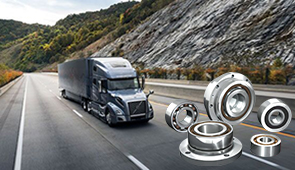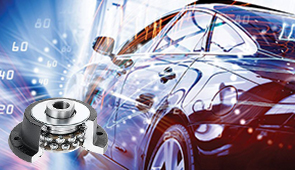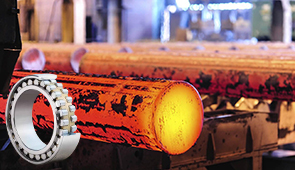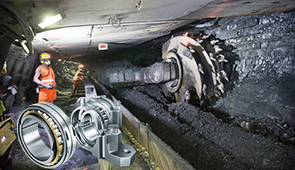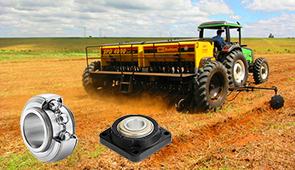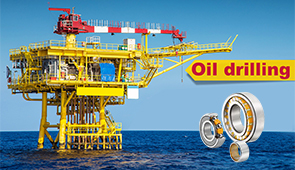Understanding the Different Types of Motor Shafts
Motor shafts are a critical component in countless mechanical systems, serving as the primary medium for transmitting torque and rotational motion in motors and machinery. Despite their seemingly simple design, motor shafts come in a variety of types, each specifically engineered to meet the demands of different applications. From keyed shafts to splined designs, the choice of shaft affects the efficiency, durability, and overall performance of a motorized system. This comprehensive guide examines the key characteristics, applications, and advantages of different motor shaft types, providing you with the knowledge needed to make informed decisions when selecting the right shaft for your specific needs. Whether you’re a mechanical engineer, technician, or enthusiast, this article will help you better understand the pivotal role motor shafts play in ensuring operational success.
What are the Common Shaft Types in Electric Motor Shaft Designs?
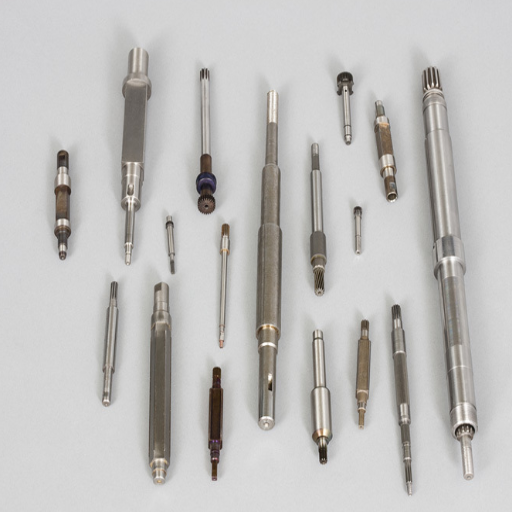
How do Shafts Transmit Torque in Electric Motors?
As a motor interacts with its mechanical load, it applies torque to it. The torque is received and processed by the motor shaft. The motor shaft is the core part of the motor because it enables the electromotive ensures of the motor to work. A motor shaft receives the power of electromotive forces and relays it as torque. The motor shaft is subject to mechanical loads like shear forces, torsion, torque, and stresses so it performs motor power transfer consistently.
The structure and geometry of an electric motor shaft, as well as the materials used, impact the torque transfer. Electric motor shaft tools are made of durable materials like alloy steels or composite materials which ensures low deformation. Properly manufactured parts which amke a shaft keyed or flat shaped with supporting features greatly increase its chance of meshing which results in better rotation transfer and prevents slippage.
Controlling vibratory energy loss is important to efficient energy transfer on a motor. Efficient torque transfer must deal with set rotational speeds, axial and radial loads, and thermal expansion.
What Materials are Used in Shaft Manufacturing?
The variety of materials important for the mechanical properties, strength, and overall functioning of the shaft is selected for precise machining operations. They include carbon steel, stainless steel, alloy steel, and in some instances, high-strength composite materials.
- Carbon Steel: The yield strength, ready availability and low cost are the reasons carbon steel is most often chosen. Low-carbon steels are used in parts that do not need very high strength; more flexibility is needed. High-carbon steels have greater hardness and also better wear resistance, providing wear resistance parts of tractors.
- Alloy Steel: The addition of chromium, molybdenum, and nickel increases the performance of steels at elevated temperatures and other harsh conditions, forming alloy steels. With the contribution to combating metal fatigue, these materials have superior resistance to sustain tensile stress and better thermal stability, ideal for prolonged high-stress and high-temperature applications.
- Stainless Steel: The Marine or chemical industries require high corrosion resistance, for which stainless steel is used extensively. The 304 stainless steel and 316 stainless steel have good mechanical properties but are selected more for their corrosion protection than strength, which further applies to stainless steel grades.
- Composites and Advanced Alloys: Specialized applications require advanced materials like titanium alloys and carbon fiber composites. These lightweight materials with high strength and high resistance to extreme conditions are used in aerospace, precision engineering, and extreme environments.
While choosing materials for shafts, particular elements such as operating loads, rotational velocities, speeds, corrosive environment exposure, and temperature shifts have to be taken into account. The mechanical properties of the material, along with its productivity, toughness, and hardness, can be improved using a heat treatment method involving quenching and tempering. Manufacturers can increase the performance as well as the reliability and longevity of shafts under different operating conditions by using materials designed for specific applications.
Why is Shaft Design Crucial for Power Transmission?
The design of the shaft plays a significant role in the functionality of the power transmission systems. This is because shafts fundamentally act as the key components for the mechanical power transfer in a machine or system. Sho yhafts that are designed well conserve energy while ensuring that there isn’t mechanical loss, be it friction or misalignment. During the design process, torque requirements, rotational speed, and the speed at which the shaft can be loaded are all meticulously studied in detail so that the shaft does not fail during its operational use.
To avoid excessive damage during prolonged use, shear and bending stresses need to be calculated. For example, shafts that are subject to high torque require them to be constructed using high-strength alloys which increases the need for thicker shafts. Moreover, alignment along with balance of the shaft is equally important because excessive vibration can result in wear, noise, and other damages to the machine.
Another critical component of shaft design is the application of appropriate surface finishes and coatings to minimize corrosion and friction. These traits, together with optimized shaft geometry and weight, aid in achieving increased shaft durability and operational efficiency. Through precise engineering design and the careful selection of materials, modern shaft designs enhance the performance and reliability of power transmission systems in the automotive, aerospace, and manufacturing industries.
How Does a Custom Shaft Differ from Standard Types of Shafts?
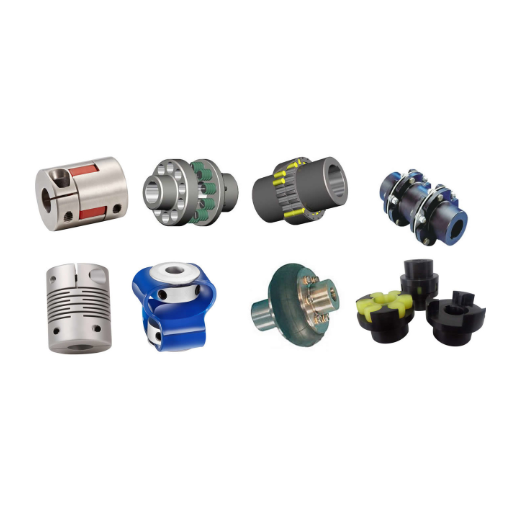
What are the Benefits of a Custom Shaft?
Custom shafts provide unique solutions for specific applications, which offer distinct technical and operational benefits over basic shafts. Unlike custom shafts, which have meticulously set tolerances, dimensions, and material specifications, baseline shafts do not take into account the geometry of the application. This level of detail greatly reduces performance inefficiencies and ensures optimal results when facing difficult conditions.
One major advantage is sharp improvements in performance metrics. For instance, increasing the custom shafts surface finish, its diameter, and the material it is made from can lead to maximized torque capabilities, minimized vibrations, and reduced wear. Custom shafts may need to be made with certain materials, for instance, high-strength alloy or composite, due to environmental impacts like thermal stability, corrosion resistance, or fatigue strength, crucial for aerospace and energy sectors.
With custom shafts, system reliability is vastly improved. With no tradeoffs from retail designs, custom shafts offer greatly reduced system downtime and longer operational lifespans, which translates to better ROI. In conjunction with advanced engineering design, custom shafts allow for innovative power transmittance designs while integrating with other parts, further enhancing the versatility of the system.
At last, improvements in equipment, particularly CNC machining and additive manufacturing, have greatly increased both the accuracy and efficiency of custom shaft production. These technologies allow for greater prototyping speed, lower material expenditure, greater flexibility, and reduced lead times, which benefits specialized industries. Hence, innovation, high performance, and lasting quality make custom shafts essential in any industry.
How are Custom Shafts Designed and Manufactured?
The design and manufacturing steps of custom shaft begin with an engineering analysis to figure out the custom mechanical and functional requirements necessary. An individual assessment of load, torque, speed of rotation, sand and environmental conditions, along with materials, need to take into deep consideration.
After the design is completed, the production step shifts to choosing the correct materials that need to be incorporated into the weld. This specific steel, high strength, aluminum alloys, or other composites that serve different performance demands and application environments are not out of place.
Furthermore, regarding some applications, surface treatment needs to be added to make the shaft more resistant to wear. Final quality assurance processes that make certain all the requirements, tests, and verifications alongside dimensional and hardness testing indeed meet rigid set standards to complete the Custom shaft’s production cycle.
The integration of emerging technologies such as additive manufacturing is now found in custom shaft production. This method allows for the crushing of designs for weight saving as well as the creation of advanced geometry shafts that could not be made with traditional machining techniques. These innovations continue to elevate manufacturing efficiency while maintaining outstanding quality, reliability, and durability for custom applications.
What Role Does a Camshaft Play in Electric Motors?
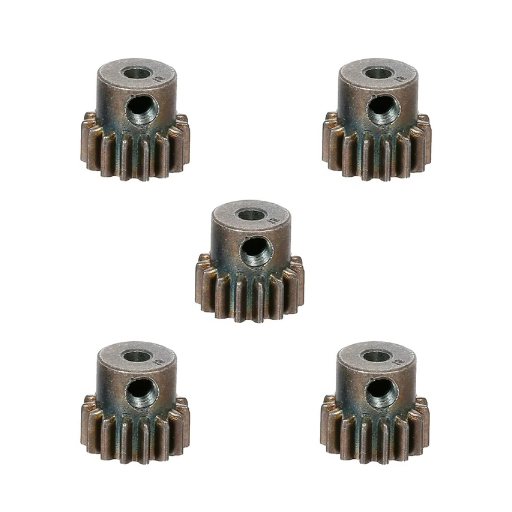
How is a Camshaft Different from Other Shaft Types?
A camshaft is a unique shaft used specifically for controlling the opening and closing of valves in an engine, be it internal combustion engines, the differently or similarly used meter devices. A camshaft is unlike any other shaft in that it has complex cut shapes (referred to as cams) along its length that serve a particular purpose. Each lobe is placed in a manner such that it can enable the rotation of the valves in consonance with the crankshaft of the engine and is actuated when the motion is circular.
Apart from manufacturing processes relating to materials, camshafts differ from each other in the selection of a camshaft core. It is typically manufactured through wrought metal like hardened Steel Alloys or cast irons as they have high load capacities against deforming st. os and abrasive wear. Additionally, the camshaft may also have surface treatments done to them, like hardening through nitriding to make them more durable, less prone to friction, and lighter in weight.
Differentiation between the camshaft and other types of shafts is usually less in other parts of the camshaft but lies in the asymmetrical geometry across the rotating shaft. Modern camshaft systems rest here, with each side featuring a timing increase with speed, allowing more fuel injection when the speed is increased, which boosts mileage for fuel-efficient drivers. This is a distinct rather uncommon found in other types of shafts which have more unyielding functions and generalized purposes in mechanical systems.
Translating to fuel control pedals, it allows the driver to have a free hand and push a button to increase mileage by accelerating without worrying about pressing deeper into the pedal. As a whole, shafts are very precise with specific and differing dc, termed to as special means.
What are the Main Components of a Camshaft?
Camshaft parts have their unique functions and, when combined, help in controlling the valve timings, something integral to an internal combustion engine. The primary components include:
- Bearing Journals: These cylindrical parts of the camshaft are mounted on the engine block or camshaft housing and serve as rotational axes for the camshaft. High-end precision machining increases the lifespan of these parts by smoothing rotation and reducing wear during use.
- Cam Lobes: The portions of the shaft that are in contact with the valve lifters is also in a certain contact with the shaft. The lobe phases heavily dictate performance by deciding the engines torque and fuel economy. For greater torque, additional fuel can be used as the valves alter the timing, duration and lift of the lobes.
- Core Shaft: This is the most basic component that holds the moon shaft intact, it is actually the middle part of the camshaft. In contrast to other parts susceptible to harm, the core shaft is constructed out of fortified steel or cast iron which allows it to withstand great materials under hightemperature stress.
- Timing Gear or Sprocket: The function of these parts bring the crankshaft and camshaft together, and they usually do so by a timing belt, chain, or gears. The proper alignment of the camshaft and crankshaft is crucial in maintaining the right order of the valve operations about the pistons, which is solved through these parts.
- Oil Passages: As with many modern camshafts, the oiling of the camshaft and its associated parts is done through internal oil passages or galleries in the camshaft. This characteristic is very important for alleviating friction and overheating.
- Sensors or Phasers: Along with VVT, more advanced features add multiprocessing capabilities and sensors that can include phasers or actuators, which add the possibility of performing some modifications at certain driving conditions, optimizing engine performance modification at various engine load and speed conditions.
All these components have to be made and assembled into the camshaft for it to fulfill its purpose in the engine system. Advanced methods of producing camshaft materials and manufacturing work with changing technologies to provide additional reliability in the mechanical operation of the camshaft.
Why is Shaft Stress Analysis Important in Motor Shaft Engineering?
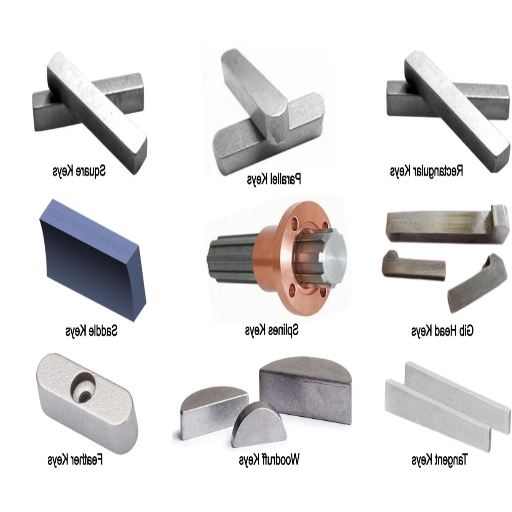
What Factors Contribute to Stress in Motor Shafts?
The interrelation of mechanical, thermal, and operational factors gives rise to stress in the motor shaft. A torque created during motor operation is one of the primary contributors to stress because it forms a combination of bending and torsional stresses within the shaft. These factors are very strong during high-load conditions or sudden changes in rotational speed. As with any other geometric figure, a shaft has a diameter, length, and alignment that are of equal importance. Any imbalance or misalignment can lead to stress concentrations, which eventually tend to weaken the shaft.
Choosing the right material is imperative as the mechanical components, such as tensile strength, elasticity, and fatigue resistance, dictate the ability of the shaft to endure multiple stress cycles. Furthermore, operating temperature changes tend to cause thermal expansion, which, in turn, induces thermal stress that has the potential to compromise the structural integrity of the shaft. Stress concentrations are only worsened by lack of lubrication, contamination from the environment, and inappropriate coupling alignment, which tend to increase vibrations and amplify stress levels.
Sressors are best managed by accurate stress analysis using sress determining techniques such as finite element analysis (FEA). This augments the chances of the shafts are designed with optimal safety margins enhancing long term performance and durability.
What Techniques are Used to Mitigate Shaft Stress?
Reducing shaft stress requires a combination of engineering effort, optimization of materials, and modern manufacturing practices. The most effective approaches include the following:
- Choosing Materials: The shaft is made out of high strength alloys or composite materials . These materials resist stress while maintaining their structure. Additionally, titanium and carbon fiber reinforced polymers offer enhanced fatigue strength.
- Surface Treatment: Shot peening, nitriding, and carburizing are used to improve the hardness and reduce the chances of fatigue cracks. These processes also increase the resistance to stress corrosion and wear.
- Relieving Stress: Thermal and vibration stress relief relax the remaining stress from machining or welding to improve machining longevity against dynamic loads.
- Geometric Optimization: Critical parts of the shaft undergo geometric changes such as the addition of fillets, tapered transitions, and shim type shafts to lower the stress concentration. Stress distribution is further refined using Finite Element Analysis (FEA) to be more uniform.
- Dynamic Balancing: Precise vibrational balancing of rotating shafts reduces the vibrational forces encountered in operation. This limitation of cyclic stress also extends component life.
- Shaft Protective Coatings: Protective coatings like chromium plating and polymer adhesive films prevent shafts from environmental stress and corrosion or wear over time.
When these factors are implemented in combination with rigorous testing and maintenance schedules, engineers can improve the mechanical system’s shaft fatigue life while ensuring ease of maintenance.
How do Stepped Shafts Improve Power Transmission?
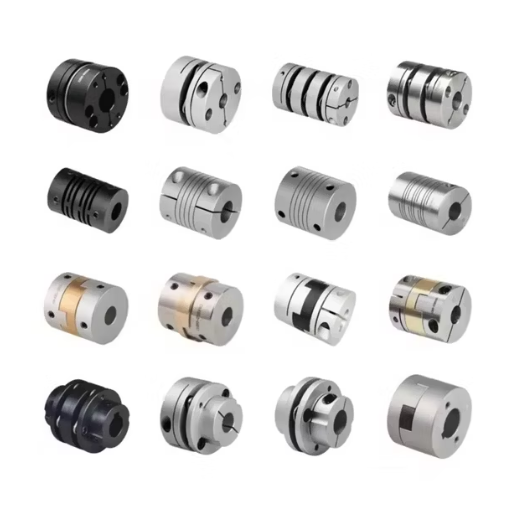
What are Stepped Shafts?
Stepped shafts are innovative pieces of machinery having regions with different diameters along their lengths for added versatility in power transmission systems. The geometric configuration of stepped shafts permits certain advantages regarding load distribution as well as enabling the integration of disproportionate components and minimizing the balance of rotation. To facilitate mechanical components like bearings, gears, or pulleys, their configuration must provide positive alignment to torque soft transmission so that there is no slip.
From a structural perspective, the stepped design enhances the ability of the shaft to handle varying stresses along its axis; thus, the chances of material fatigue, failure are diminished in regards to risk. These shafts are manufactured using advanced methods like precision machining and CNC milling, which guarantee close tolerances and excellent surface finishes, which guarantees them from ‘precision-stepped’ shafts. With regards to their composition, alloy steels, stainless steels, and certain composites are widely used in shaft manufacturing, which select these materials because of their strength and resistance to wear.
Assorted research has proved that misaligned shafts brought about by schaded stepped shafts will be less prone to misalignment than modular assembly shafts. In automotive and aerospace engineering, tailored design for space optimization without compromising functionality highlights the importance of stepped shafts. Through power transmission systems, stepped shafts allow the increase of dependability, efficiency, and life span of components in various applications due to reliable operation as implemented by engineers.
How do Stepped Shafts Enhance Output Shaft Performance?
The performance of an output shaft’s functionality is enhanced with the use of stepped shafts as the variations in diameter along the shaft’s length improve the distribution of mechanical load. Because of this geometry, stress concentration that occurs at transition points is greatly reduced, and with that, the inevitable fatigue failures that come with shafts that are uniform are dealt with. By incorporating smaller sections and larger segments of increased torque, stepped shafts can achieve a balance between efficiency and strength.
Precision manufacturing techniques, along with materials, have enhanced the function of stepped shafts. Alloys such as titanium and high-strength steel have modernized the industry, for they are capable of offering lighter designs without sacrificing sturdiness. Stepped shafts also undergo precise CNC machining, which ensures exact tolerances, and alongside these benefits comes the claim that they handle up to 25-30% more stress when compared to shafts with uniform profiles. Greater operational reliability is a benefit, while at the same time, streamlined energy expenditure is ensured.
The increased function of energy output from the stiffened stepped shafts greatly reduces system vibrations and rotational oscillations. This makes them essential in setups where maximum power and optimum energy retention is critical, such as turbines, automotive gadgets, robotics, and advanced machine tools.
What Industries Benefit from Stepped Shafts?
Shafts with steps are widely used in different industries because of their unmatched mechanical traits and flexibility to fit complex engineering designs. In the automotive industry, stepped shafts are heavily employed in driving mechanisms, gear boxes, and differentials. Balanced (as rotating parts) and having a high degree of torsional elasticity, these shafts enhance vehicle performance while coping with high stress. The aerospace industry also applies these shafts in turbine engines and control systems where, together with vehicle, operational safety and high structural fatigue resistance are critical.
Moreover, the robotics sector utilizes stepped shafts in actuators and joints that facilitate enhanced control over motion and greater tolerance to mechanical loads. Equally important are components in the renewable energy industry, namely wind turbines and solar tracking systems (where they increase energy efficiency and service life). The oil and gas industry also depends on stepped shafts for drilling tools and hydraulic pumps, which need strong parts that endure very high pressure and harsh environmental conditions.
These examples highlight the range of application of shafts with steps, showing their significant contribution in improving the efficiency and longevity of high-performance systems.
Frequently Asked Questions (FAQs)
Q: What are the different types of motor shafts?
A: Motor shafts can be categorized into several types, including machine shafts, transmission shafts, and axle shafts. Each type is used for different applications, such as connecting the motor to a gear system or transmitting power from one component to another.
Q: How do motor shafts transmit power?
A: Motor shafts transmit power by connecting the motor to other components in mechanical systems. They transfer rotational force from the motor to other parts of the machine, allowing the entire system to function effectively.
Q: What materials are motor shafts typically made from?
A: Motor shafts are typically made from materials such as hot-rolled steel, SAE-grade steel, or ground stock of any material. The choice of material depends on the specific shaft application, including the required strength and flexibility.
Q: How do manufacturers of electric motors ensure the durability of motor shafts?
A: Manufacturers of electric motors ensure the durability of motor shafts by carefully selecting materials and using precise machining processes. Factors such as residual stresses and the weight of the shaft are also considered to enhance performance and longevity.
Q: Can motor shafts be customized for specific applications?
A: Yes, motor shafts can be customized for specific applications. Features such as keyways, splines, and specific dimensions can be machined to fit the exact requirements of the device in mechanical systems.
Q: What role do flexible shafts play in mechanical systems?
A: Flexible shafts are used in mechanical systems to accommodate misalignment between components or to connect the motor to devices that require some degree of movement. They help maintain efficient power transmission even when components shift slightly.
Q: How are residual stresses managed in the manufacturing of motor shafts?
A: Residual stresses are managed by selecting appropriate materials and using controlled rolling processes during manufacturing. These methods help maintain the integrity of the shaft and prevent issues such as warping or premature failure.
Q: How do short shafts differ from longer shafts in terms of application?
A: Short shafts are typically used in applications where space is limited or where the shaft must connect closely positioned components. Longer shafts are used to transmit power over greater distances within a machine or system.
Q: Can damaged motor shafts be repaired?
A: Yes, damaged motor shafts can often be repaired depending on the extent of the damage. Techniques such as welding, machining, and using bushings can be employed to restore the shaft to its functional condition.
Q: What considerations do motor manufacturers take into account when designing a shaft for high rpm applications?
A: When designing a shaft for high rpm applications, motor manufacturers consider factors such as balance, material strength, and the potential for vibration. The shaft must be designed to withstand high rotational speeds without compromising performance or safety.
UCTH213-40J-300 with Setscrew(inch)
CNSORDERNO: Normal-duty(2)
TOGN: UCTH213-40J-300
SDI: B-R1/8
SD: 2 1/2
UCTH212-39J-300 with Setscrew(inch)
CNSORDERNO: Normal-duty(2)
TOGN: UCTH212-39J-300
SDI: B-R1/8
SD: 2 7/16
UCTH212-38J-300 with Setscrew(inch)
CNSORDERNO: Normal-duty(2)
TOGN: UCTH212-38J-300
SDI: B-R1/8
SD: 2 3/8
UCTH212-36J-300 with Setscrew(inch)
CNSORDERNO: Normal-duty(2)
TOGN: UCTH212-36J-300
SDI: B-R1/8
SD: 2 1/4
UCTH211-35J-300 with Setscrew(inch)
CNSORDERNO: Normal-duty(2)
TOGN: UCTH211-35J-300
SDI: B-R1/8
SD: 2 3/16
UCTH211-34J-300 with Setscrew(inch)
CNSORDERNO: Normal-duty(2)
TOGN: UCTH211-34J-300
SDI: B-R1/8
SD: 2 1/8










